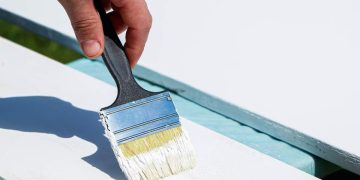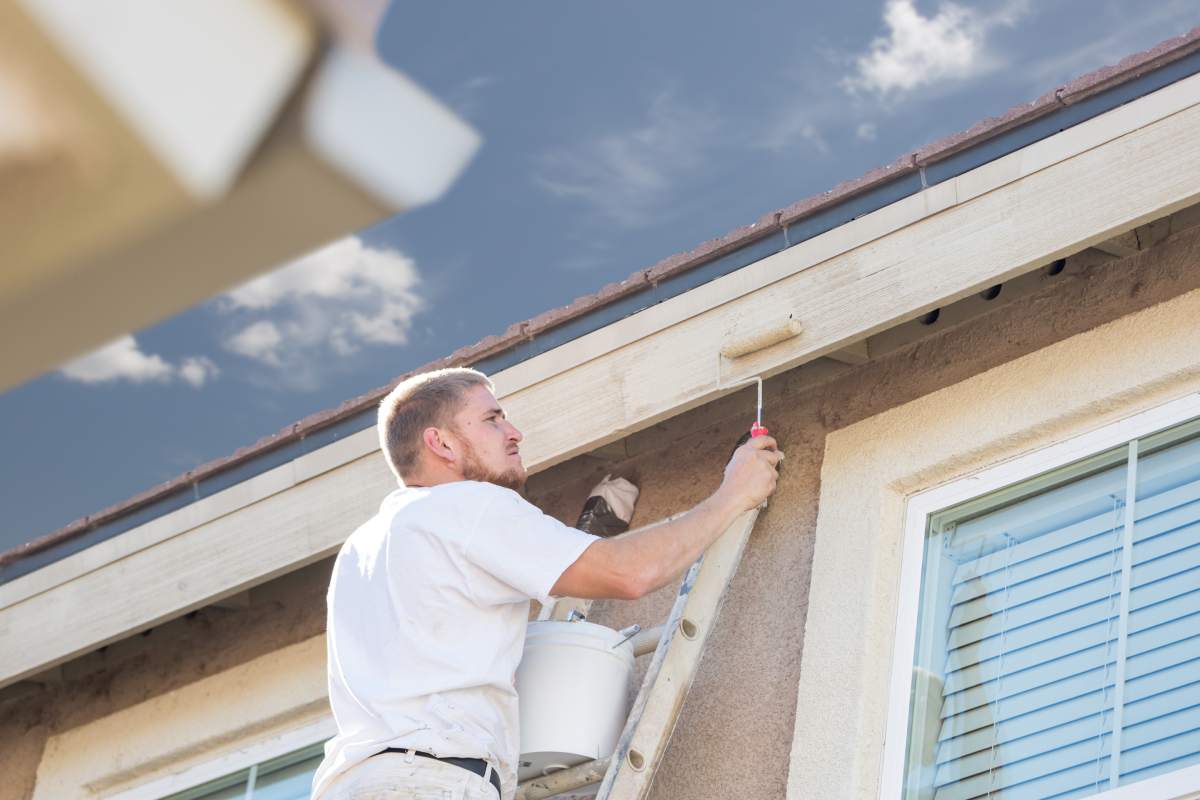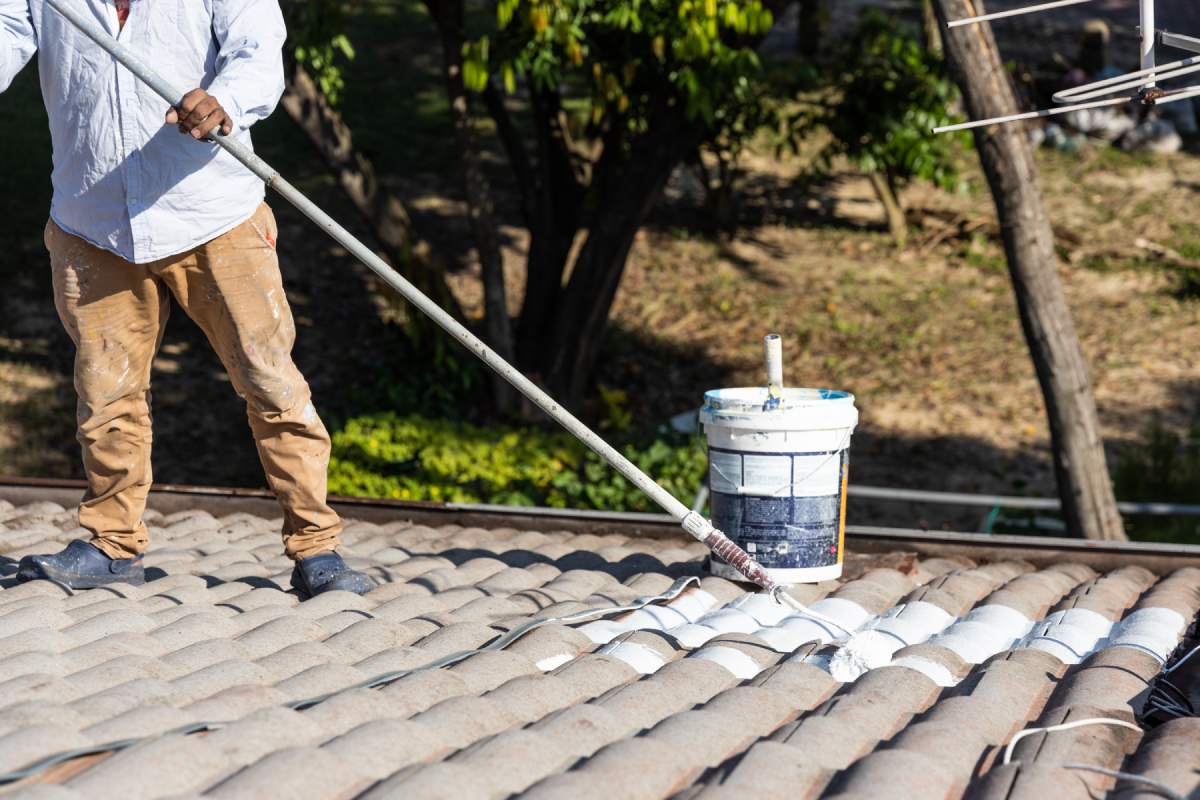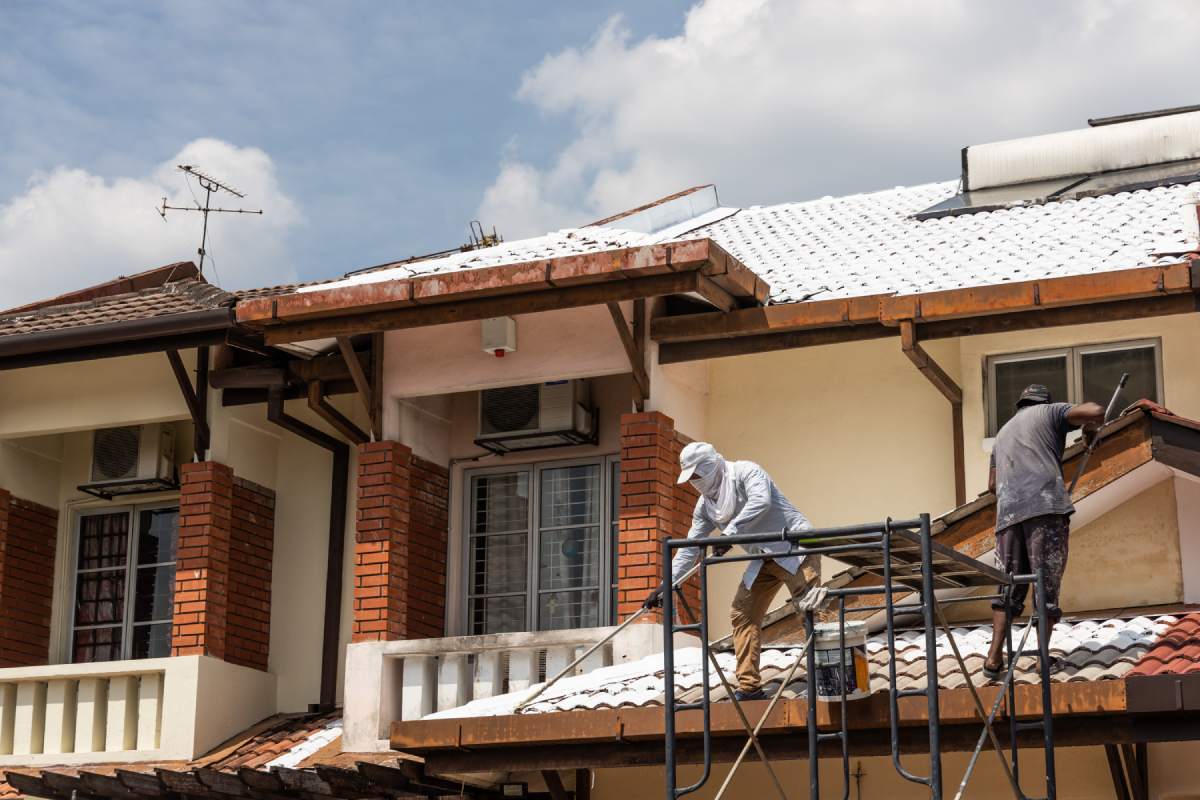Selecting the perfect paint for your metal roof is crucial to keep it looking great and functioning well. The right paint will not only give your roof a fresh look but also shield it from the weather. With so many options out there, picking the best one for your needs might seem tough.
This guide will walk you through choosing the ideal paint for your metal roof by highlighting important factors like the type of roof material, paint varieties, and their features. If you’re aiming to boost your roof’s looks or its performance, getting to grips with these aspects will help you choose wisely and guarantee a paint job well done.
Should You Paint Your Metal Roof?
Painting a metal roof can be a smart move for many homeowners, but it’s important to consider a few key factors before diving in. Let’s break down the pros and cons to help you decide if painting your metal roof is the right choice for you.
Why Paint a Metal Roof?
- Aesthetic Appeal: Over time, metal roofs can start to look dull or rusty. Painting your roof can give it a fresh, clean appearance and can also enhance the overall look of your home. With a variety of colours available, you can choose a shade that complements or updates your home’s exterior.
- Increased Longevity: Metal roofs are known for their durability, but painting them can extend their lifespan even further. A good quality paint job acts as a protective layer, shielding the metal from harsh weather conditions, UV rays, and potential rust. This added protection can help you avoid costly repairs or replacements in the future.
- Improved Energy Efficiency: A painted metal roof, especially one with reflective or cool roofing paint, can help reduce your home’s cooling costs. These paints reflect more sunlight and heat away from the roof, keeping your home cooler in the summer and reducing the need for air conditioning.
Things to Consider Before Painting
- Current Condition of the Roof: Before painting, assess the current condition of your metal roof. If it’s severely rusted or damaged, you might need to repair these issues first. Painting over significant rust or damage can lead to poor results and may even worsen the problem. Ensure that the roof is clean, dry, and free from any debris or old paint.
- Type of Paint: Not all paints are suitable for metal roofs. You’ll need a paint that is specifically designed for metal surfaces. These paints are formulated to adhere well and withstand weather conditions. Look for products labelled as metal roof paint or coatings that are designed to resist rust and provide a durable finish.
- Preparation and Application: Proper preparation is crucial for a successful paint job. This typically involves cleaning the roof thoroughly, possibly sanding down any rust spots, and applying a primer if needed. Follow the manufacturer’s instructions for application to ensure the best results. Depending on the size of your roof, you might want to hire professionals who have the experience and equipment needed to do the job correctly.
- Cost: Painting your metal roof can be a cost-effective way to enhance its appearance and longevity, but it’s still an investment. Consider the cost of materials, potential professional services, and the time required to complete the project. Compare this to the cost of other roof maintenance options to determine if painting is the best choice for your budget.
Benefits and Drawbacks
Benefits:
- Enhances appearance and curb appeal.
- Protects the roof from the elements, potentially extending its life.
- Can improve energy efficiency by reflecting more sunlight.
Drawbacks:
- Requires proper preparation and application for best results.
- Might not be a good option if the roof is in poor condition.
- Initial costs can be significant, especially if hiring professionals.
When Should You Paint Your Metal Roof?
If you notice that your metal roof’s colour is fading or the surface is showing signs of wear, it’s a good idea to give it a fresh coat of paint. This not only restores its appearance but also helps protect the roof from further damage.
Timing is important when painting your roof. Aim to do this during mild weather conditions, such as in the spring or early fall. Avoid painting during extreme temperatures or rainy periods, as these can affect how well the paint adheres and dries. Ideal conditions are temperatures between 50°F and 85°F (10°C to 30°C) with dry, calm weather.
Don’t wait until severe rust or extensive damage appears. It’s better to paint your roof before these issues become serious. Proactively painting your roof can prevent costly repairs and extend its lifespan. Regular inspections of your roof can help you identify when it’s time for painting. Keeping an eye on its condition allows you to address minor wear before it turns into a bigger problem.
Ideal Times for Painting a Metal Roof
- During Mild Weather: The best time to paint your metal roof is during mild weather conditions. Ideally, you want to paint when temperatures are between 50°F and 85°F (10°C to 30°C). Extreme temperatures, either hot or cold, can affect how well the paint adheres and dries. If it’s too hot, the paint might dry too quickly, leading to poor adhesion. If it’s too cold, the paint might not cure properly.
- Dry Conditions: Ensure that the weather is dry and clear for several days before and after painting. Rain or high humidity can interfere with the drying process and affect the finish. It’s important that the roof is completely dry before you start, as moisture can prevent the paint from sticking properly.
- Avoid High Winds: Windy conditions can make painting more difficult and can cause the paint to be blown away or to dry unevenly. It’s best to choose a calm day for the job to ensure a smooth application and even coverage.
Pre-Painting Considerations
- Inspect the Roof: Before painting, inspect your roof for any damage or rust. Address any issues like leaks, broken seams, or significant rust spots before you start painting. A clean, well-prepared surface is crucial for a successful paint job.
- Check for Existing Paint: If your roof has existing paint, ensure it’s in good condition. If the old paint is peeling or flaking, you might need to strip it off and apply a primer before applying a new coat. This preparation will help the new paint adhere better.
- Plan for Maintenance: Regular maintenance can help keep your metal roof in good condition. If you notice signs of wear, such as fading or peeling paint, it might be time to repaint. Keeping an eye on your roof’s condition can help you address minor issues before they become major problems.
Seasonality and Timing
- Spring and Fall: Spring and fall are generally the best times to paint your metal roof. During these seasons, temperatures are more likely to be within the ideal range, and the weather is often more stable. Avoid painting in the peak summer heat or in the dead of winter.
- Avoid Rainy Seasons: In regions with distinct rainy seasons, plan to paint your roof before the rainy season begins. This will ensure that the paint has time to cure properly and that your roof is protected before the rain starts.
- Professional Scheduling: If you’re hiring professionals to paint your roof, they can help you choose the best time based on their experience and the local climate. They can also handle the preparation and ensure the job is done right.
How to Choose the Right Paint For Your Metal Roof?
Choosing the right paint for your metal roof is crucial for ensuring its longevity, appearance, and performance. Here’s a straightforward guide to help you select the best paint for your metal roof.
1. Understand Your Roof’s Needs
Before picking a paint, consider the specific needs of your metal roof. Metal roofs can vary in type and condition, so understanding your roof’s material and current state will guide you in choosing the appropriate paint. Common types of metal roofs include steel, aluminium, and copper, each requiring different types of paint for optimal results.
2. Select the Right Type of Paint
There are a few types of paint specifically designed for metal roofs:
- Acrylic Paint: This is a popular choice due to its flexibility, durability, and ease of application. Acrylic paints are water-based, making them easy to clean up, and they offer good UV resistance. They’re suitable for a variety of metal surfaces and are particularly effective in environments with extreme weather.
- Silicone Paint: Known for its superior water resistance, silicone paint is ideal for roofs that experience frequent rain or high humidity. It forms a flexible, durable layer that can withstand harsh weather conditions and is resistant to mildew and algae growth.
- Polyurethane Paint: This type of paint offers excellent durability and resistance to abrasion and chemicals. It’s a good choice for roofs that are exposed to heavy traffic or industrial environments. However, it can be more challenging to apply and may require professional installation.
3. Consider the Paint’s Features
When choosing paint, look for the following features to ensure it meets your needs:
- Durability: Opt for paint that is designed to withstand the elements, including UV rays, rain, and temperature fluctuations. A durable paint will help protect your roof from damage and extend its lifespan.
- Colour and Reflectivity: The colour of the paint can impact the energy efficiency of your home. Lighter colours reflect more sunlight, helping to keep your home cooler in the summer and potentially reducing cooling costs. Darker colours absorb more heat, which might be beneficial in cooler climates.
- Ease of Application: Some paints are easier to apply than others. If you’re planning to do the job yourself, choose a paint that is user-friendly and doesn’t require complex application techniques. Many paints come with detailed instructions to guide you through the process.
4. Check for Compatibility
Ensure that the paint you choose is compatible with your roof’s existing coating or material. If your roof already has paint or a coating, you may need to use a specific type of primer or paint to ensure good adhesion and avoid peeling or flaking.
5. Evaluate Environmental Impact
Consider the environmental impact of the paint. Look for paints that are low in volatile organic compounds (VOCs), which are harmful to both health and the environment. Low-VOC paints are a more eco-friendly option and contribute to better indoor air quality.
6. Consult with Professionals
If you’re unsure which paint to choose or how to apply it, try consulting with a residential painting professional like Painting All Sorts, they can provide valuable insights and recommendations for the best paint for your specific roof type and condition, and ensure that the application is done correctly.
7. Read Reviews and Warranties
Finally, read reviews and check warranties before making a decision. Reviews from other homeowners can give you a sense of how well the paint performs in real-world conditions. Warranties can also provide peace of mind, ensuring that the paint will last as long as promised.
Conclusion
Make sure you pick the right paint for your metal roof to get a strong, effective, and good-looking finish. Consider the specific needs of your roof, choose the right type of paint, and check for important features like durability and environmental impact. Also, make sure it’s compatible with any existing coatings, seek professional advice if you need to, and read product reviews for the best results.
With the right paint and proper application, you’ll not only spruce up the look of your metal roof but also extend its lifespan, protecting your home and investment for years to come.

















































